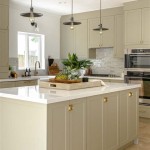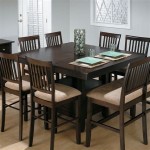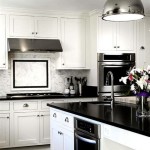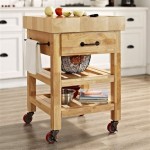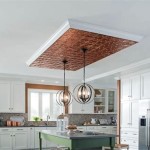Wood Shelves For Kitchen Cabinets: Enhancing Functionality and Aesthetics
Wood shelves within kitchen cabinets represent a cornerstone of kitchen organization and design. Their versatility, durability, and aesthetic appeal make them a popular choice for homeowners aiming to optimize storage while adding a touch of warmth and character to their kitchens. The selection of wood type, shelf construction, and installation methods significantly impacts their performance and longevity. This article explores the advantages of wood shelves, the various options available, and factors to consider when incorporating them into kitchen cabinetry.
Advantages of Wood Shelves
Wood shelves offer several benefits compared to alternative materials like wire or plastic. One primary advantage is their structural integrity. Wood, particularly hardwoods, can support substantial weight without sagging or bending, making them ideal for storing heavy items such as cookware, dishes, and pantry staples. The solid surface of a wood shelf also prevents smaller items from falling through, unlike wire shelves, which can present this issue. Furthermore, wood is inherently more aesthetically pleasing than many other materials. The natural grain patterns and textures provide a visual depth that enhances the overall look of the kitchen. Wood can also be stained or painted to match existing cabinetry or to create a contrasting design element.
Another crucial advantage of wood shelves is their adaptability. They can be customized to fit any cabinet size or configuration. Unlike pre-fabricated shelves, wood shelves can be cut to precise dimensions, ensuring a perfect fit and maximizing storage space. This customization also allows for the creation of specialized shelving solutions, such as pull-out shelves, adjustable shelves, or shelves designed to accommodate specific items like spice racks or wine bottles. The inherent workability of wood also makes it relatively easy to modify shelves after installation. Additional holes can be drilled for adjustable shelf supports, or the shelves can be trimmed down if necessary.
Finally, wood shelves can contribute to a healthier indoor environment. Unlike some synthetic materials, wood is a natural and renewable resource. When sourced responsibly, wood shelves offer a sustainable alternative to materials that may contain harmful chemicals or release volatile organic compounds (VOCs). The natural properties of wood also help to regulate humidity levels in the kitchen, absorbing excess moisture and releasing it when the air is dry. This can help to prevent the growth of mold and mildew, which can be a common problem in kitchens.
Types of Wood for Kitchen Shelves
The selection of wood species for kitchen shelves influences their durability, appearance, and cost. Hardwoods are generally preferred for their strength and resistance to wear and tear. Oak, maple, cherry, and walnut are common choices for kitchen cabinetry and shelving. Oak is a readily available and affordable option known for its distinctive grain pattern and durability. Maple is a lighter-colored hardwood with a smooth grain that is easy to paint or stain. Cherry is a richer, reddish-brown hardwood that adds a touch of elegance to any kitchen. Walnut is a premium hardwood with a dark, chocolate-brown color and a striking grain pattern.
Softwoods, such as pine and fir, are less expensive than hardwoods but are also less durable. They are more prone to scratches, dents, and warping. However, softwoods can be a suitable option for shelving in areas where they will not be subjected to heavy use or excessive moisture. Pine is often used for painted or rustic-style kitchens, as its knots and imperfections add character. Fir is a lightweight softwood that is relatively stable and easy to work with.
Beyond solid wood, engineered wood products like plywood and medium-density fiberboard (MDF) are frequently utilized for cabinet shelves. Plywood consists of thin layers of wood veneer glued together, providing strength and stability. High-quality plywood with a hardwood veneer can offer a similar appearance to solid wood at a lower cost. MDF is made from wood fibers that are compressed and bonded together with resin. It is a smooth, uniform material that is ideal for painting but is less resistant to moisture than solid wood or plywood.
Shelf Construction and Design
The way a wood shelf is constructed significantly impacts its strength and appearance. Solid wood shelves can be made from a single piece of lumber or from multiple pieces that are glued together. Gluing multiple pieces together can create a wider shelf and reduce the risk of warping. The edges of a solid wood shelf can be left square or can be shaped with a router to create a decorative profile. Edge banding can also be applied to plywood or MDF shelves to conceal the edges and create a more finished look.
Shelf supports are crucial for ensuring that shelves can safely bear the intended load. Adjustable shelves typically use shelf pins or clips that fit into pre-drilled holes in the cabinet sides. Fixed shelves can be attached to the cabinet sides with screws, nails, or glue. For heavier items, additional supports, such as vertical dividers or metal brackets, may be necessary to prevent sagging. The spacing between shelf supports should be determined by the thickness of the shelf and the weight of the items it will be holding. Thicker shelves and shorter spans between supports will result in greater weight-bearing capacity.
The depth of a shelf should be carefully considered based on the items that will be stored on it. Deeper shelves can accommodate larger items but may also make it difficult to reach items stored at the back. Shallower shelves are ideal for smaller items and can help to prevent clutter. The height between shelves should also be considered to ensure that there is enough clearance for the items being stored. Adjustable shelves offer the flexibility to change the height between shelves as needed. The overall design of the shelving should also complement the style of the kitchen. Floating shelves, open shelving, and built-in shelving are all options that can create different aesthetic effects.
Installation and Finishing
Proper installation is essential for ensuring the stability and longevity of wood shelves. Before installation, the cabinet walls should be inspected to ensure that they are level and plumb. Any necessary adjustments should be made before installing the shelves. When installing adjustable shelves, the shelf pins or clips should be securely inserted into the pre-drilled holes. For fixed shelves, screws or nails should be driven into the cabinet sides at an angle to provide a strong hold. Glue can also be used to provide additional strength. It is important to use the correct type of fasteners for the material being used. Screws designed for wood should be used for solid wood and plywood, while screws designed for particleboard or MDF should be used for those materials.
The finishing of wood shelves protects them from moisture, stains, and scratches. A variety of finishes are available, including paint, stain, varnish, and polyurethane. Paint provides a durable, opaque finish that can be matched to any color. Stain enhances the natural grain pattern of the wood and adds color. Varnish and polyurethane are clear finishes that protect the wood from moisture and scratches. When choosing a finish, it is important to consider the desired appearance and the level of protection required. A water-based finish is generally preferred for kitchen cabinets as it is less likely to yellow over time and is easier to clean up.
Before applying a finish, the shelves should be sanded smooth to remove any imperfections. The wood should then be wiped clean with a tack cloth to remove any dust. Multiple coats of finish should be applied, allowing each coat to dry completely before applying the next. Lightly sanding between coats can help to create a smoother finish. When applying a finish, it is important to follow the manufacturer's instructions carefully. Proper ventilation is also essential to avoid inhaling harmful fumes. After the finish has dried completely, the shelves can be installed in the cabinets.
Maintenance and Care
Regular maintenance is essential for keeping wood shelves in good condition. Spills and splatters should be wiped up immediately to prevent staining. A damp cloth can be used to clean the shelves, but excessive moisture should be avoided. Harsh chemicals and abrasive cleaners should not be used, as they can damage the finish. A mild soap and water solution is generally sufficient for cleaning wood shelves. For stubborn stains, a specialized wood cleaner can be used.
To prevent scratching, heavy items should be lifted rather than dragged across the shelves. Coasters should be used under glasses and mugs to prevent water rings. Felt pads can be attached to the bottom of dishes and cookware to protect the shelves from scratches. Periodically inspecting the shelves for signs of wear and tear is also important. Any loose hardware should be tightened, and any damaged finish should be repaired promptly. With proper maintenance and care, wood shelves can provide years of reliable service and enhance the beauty of a kitchen.
Cost Considerations
The cost of wood shelves for kitchen cabinets varies depending on the type of wood, the construction method, the finish, and the size of the shelves. Hardwoods are generally more expensive than softwoods, and solid wood shelves are typically more expensive than plywood or MDF shelves. Custom-made shelves are also more expensive than pre-fabricated shelves. The cost of the finish will also vary depending on the type of finish and the number of coats required. Installation costs will depend on whether the shelves are installed by a professional or by the homeowner.
When budgeting for wood shelves, it is important to get quotes from multiple suppliers and contractors. Comparing prices can help to ensure that the best value is being obtained. It is also important to factor in the cost of any necessary hardware, such as shelf pins, screws, or brackets. While wood shelves can be a significant investment, they can also add significant value to a home. The durability, functionality, and aesthetic appeal of wood shelves make them a worthwhile investment for many homeowners.
Ultimately, the decision to incorporate wood shelves into kitchen cabinets involves a careful consideration of factors such as storage needs, aesthetic preferences, budget constraints, and desired level of maintenance. By carefully evaluating these factors and selecting the appropriate wood type, construction method, finish, and installation techniques, homeowners can create shelving solutions that enhance the functionality and beauty of their kitchens for years to come.

Dogberry 48 In W X 12 D Walnut Veneer Wood Kitchen Decorative Wall Shelf K 48103 Waln The Home

Matte Black J Lip Bracket Floating Shelf Modern Shelving Rustic Wood Bookshelf Farmhouse Bathroom Laundry Or Kitchen Etsy

How Deep Should Kitchen Shelves Be Ideas And Tips House With Home

Open Shelving Vs Cabinets Which Is Better Laurysen Kitchen Design

Kitchen Floating Shelves Rustic Shelving Free Shipping Wood Farmhouse Any Finish Dimension Etsy

30 Beautiful Kitchens With Floating Shelves Ideas And Tips

Alder Floating Shelves

Open Shelves In Kitchen How To Create Decorate Shelving

Farmhouse Kitchen Open Shelving Choices The Happy Housie

Kitchen Floating Live Edge Shelves

